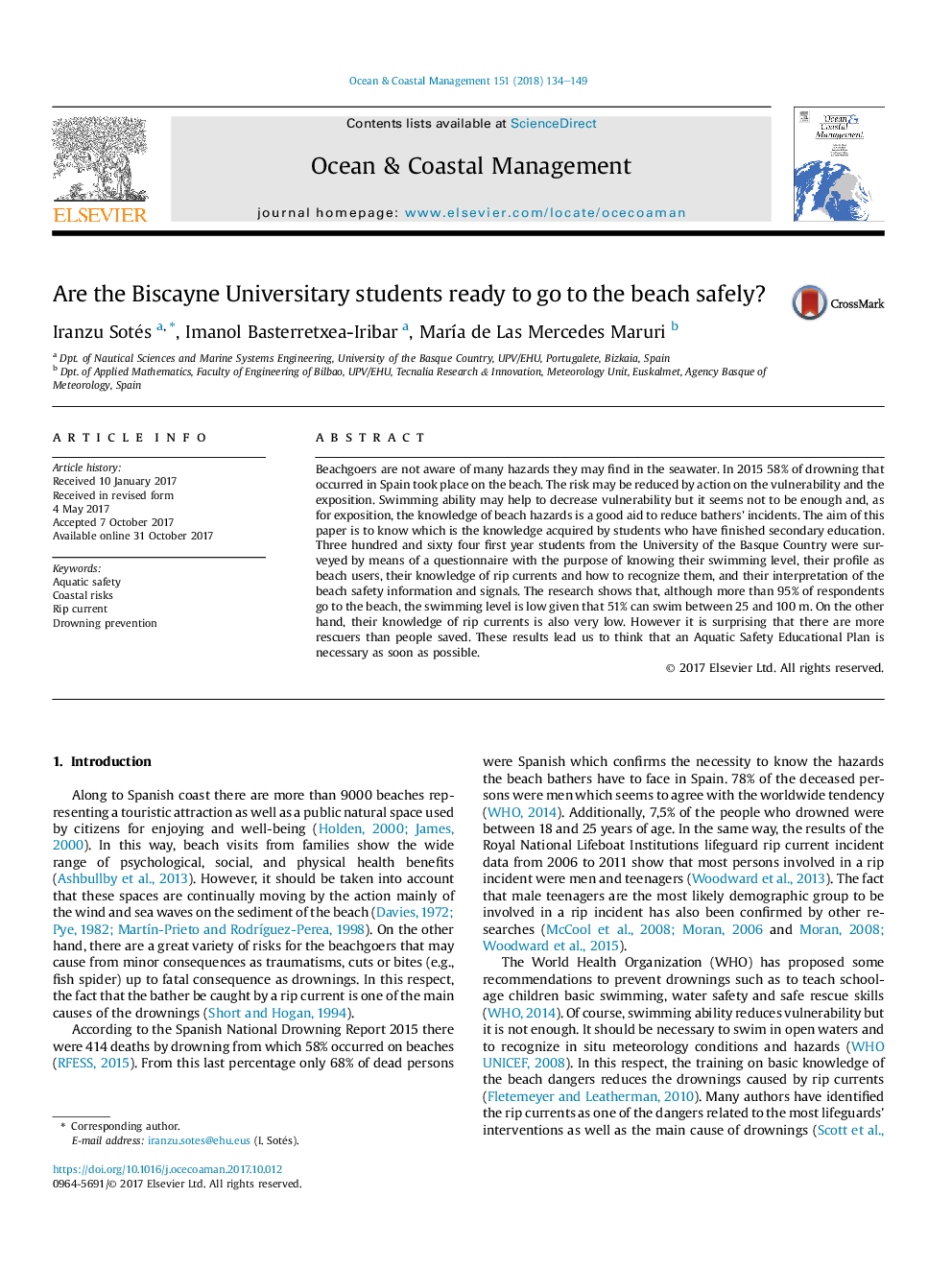| Article ID | Journal | Published Year | Pages | File Type |
|---|---|---|---|---|
| 8060948 | Ocean & Coastal Management | 2018 | 16 Pages |
Abstract
Beachgoers are not aware of many hazards they may find in the seawater. In 2015 58% of drowning that occurred in Spain took place on the beach. The risk may be reduced by action on the vulnerability and the exposition. Swimming ability may help to decrease vulnerability but it seems not to be enough and, as for exposition, the knowledge of beach hazards is a good aid to reduce bathers' incidents. The aim of this paper is to know which is the knowledge acquired by students who have finished secondary education. Three hundred and sixty four first year students from the University of the Basque Country were surveyed by means of a questionnaire with the purpose of knowing their swimming level, their profile as beach users, their knowledge of rip currents and how to recognize them, and their interpretation of the beach safety information and signals. The research shows that, although more than 95% of respondents go to the beach, the swimming level is low given that 51% can swim between 25 and 100Â m. On the other hand, their knowledge of rip currents is also very low. However it is surprising that there are more rescuers than people saved. These results lead us to think that an Aquatic Safety Educational Plan is necessary as soon as possible.
Related Topics
Physical Sciences and Engineering
Earth and Planetary Sciences
Oceanography
Authors
Iranzu Sotés, Imanol Basterretxea-Iribar, MarÃa de Las Mercedes Maruri,
